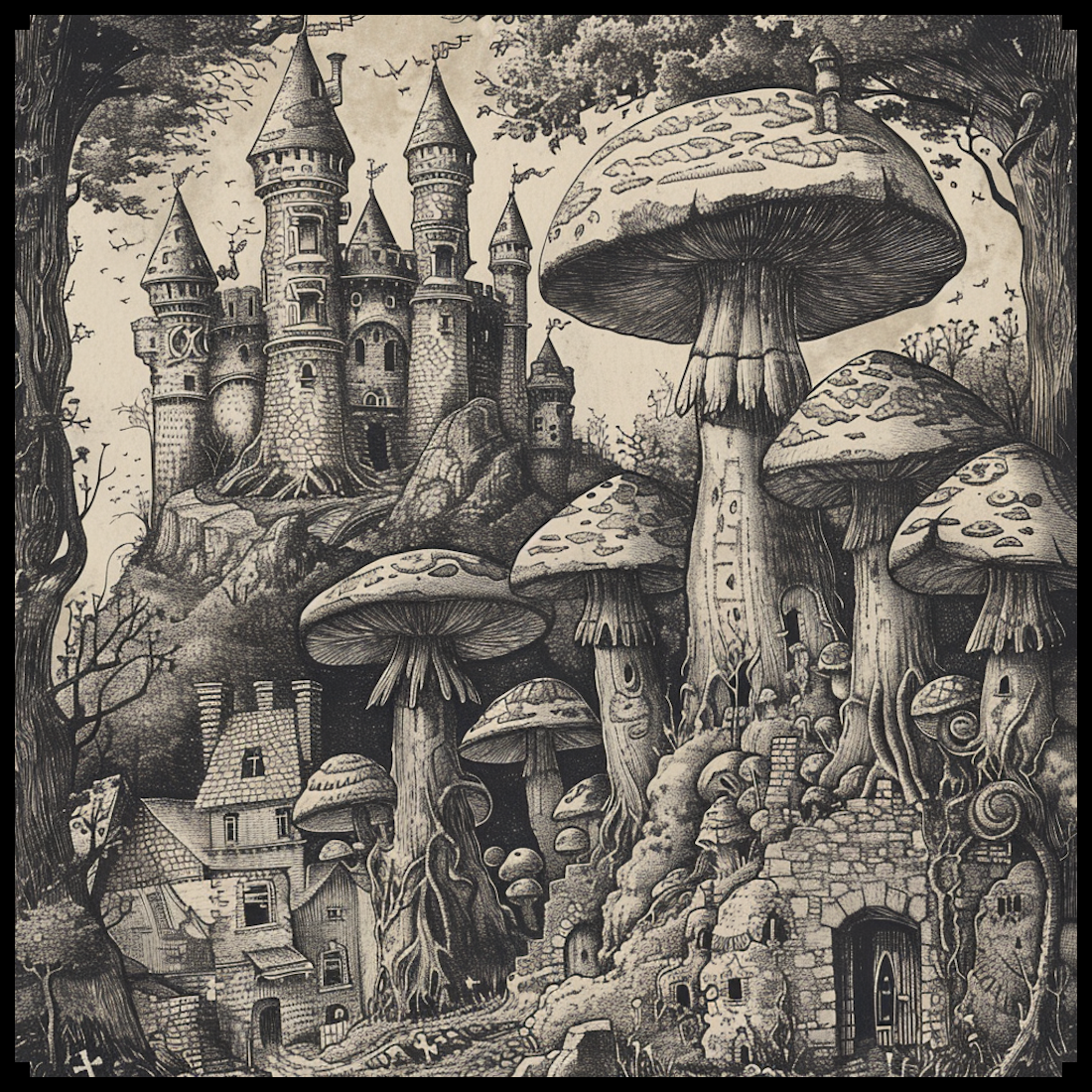
Unveiling the Fantasy World: Exploring the Role of Mushroom Imagery in Fantasy Maps
In the enchanting realms of fantasy, where imagination reigns supreme, maps serve as the gateway to adventure. Within these intricate cartographic masterpieces lie not just geographical details, but also the essence of fantastical worlds brimming with wonders. Among the myriad elements that populate these maps, one finds a recurring motif that adds an extra layer of mystique and charm: mushrooms. From solitary fungi to sprawling mushroom forests, these whimsical features, alongside fairy tale castles, have long captivated both mapmakers and adventurers alike.
The recently unveiled Fantasy Mushrooms & Fairy Tale Castles – Vintage Assets Megapack breathes new life into this timeless theme, offering a treasure trove of assets meticulously crafted to emulate the aesthetic of ancient maps. But what is it about mushrooms and fairy tale castles that makes them such compelling additions to fantasy cartography?
BUY AND DOWNLOAD The Fantasy Mushrooms & Fairy Tale Castles – Vintage Assets Megapack here :
Historical Roots:
To understand the significance of mushrooms and fairy tale castles in fantasy maps, one must delve into their historical and literary origins. In ancient cartography, mushrooms often symbolized mystery and the unknown, with their fantastical appearance hinting at uncharted territories and magical realms beyond. References to these peculiar fungi can be traced back to medieval maps, where they adorned the margins alongside mythical creatures and fantastical landscapes. Notable examples include the famed Mappa Mundi and the Hereford Map, where mushrooms appear as curious embellishments hinting at the fantastical nature of unexplored lands.
In literature, mushrooms and fairy tale castles have been integral to the worlds crafted by revered authors such as J.R.R. Tolkien and Lewis Carroll. In Tolkien’s Middle-earth, the towering mushroom-like dwellings of the hobbits in the Shire evoke a sense of cozy whimsy, while Carroll’s Wonderland features a mushroom forest as a surreal setting for Alice’s adventures.
Utility and Cultural Significance:
Beyond their aesthetic appeal, mushrooms and fairy tale castles serve practical purposes within fantasy maps. Mushroom forests and towns, for instance, can denote areas of magical influence or the domains of fantastical beings such as fairies or gnomes. Meanwhile, fairy tale castles symbolize centers of power or points of interest for intrepid adventurers seeking fortune or glory.
Moreover, these elements carry cultural significance, drawing upon folklore and mythologies from around the world. In European folklore, mushrooms have been associated with enchantment and the realm of faeries, while fairy tale castles evoke imagery of chivalry and romance, harkening back to the age of knights and damsels in distress. By incorporating these motifs, fantasy maps not only transport readers to imaginary worlds but also pay homage to centuries-old storytelling traditions.
Decorative Appeal and Artistic Expression:
In the realm of fantasy cartography, aesthetics play a crucial role in captivating the imagination of viewers. The Fantasy Mushrooms & Fairy Tale Castles – Vintage Assets Megapack excels in this regard, offering assets that evoke the charm of antique maps while retaining a sense of whimsy and wonder. From intricately detailed mushroom houses to grandiose fairy tale castles, each element adds depth and character to the map, transforming it into a work of art worthy of display.
In conclusion, the inclusion of mushrooms and fairy tale castles in fantasy maps transcends mere decoration, offering insights into the rich tapestry of fantasy worlds and the imaginations of those who inhabit them. As adventurers embark on their quests, guided by these fantastical cartographic marvels, they are reminded of the timeless allure of exploration and the boundless possibilities that lie beyond the edges of the map.

